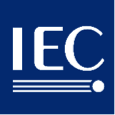 |
IEC TR 62725:2013 Analysis of quantification methodologies of greenhouse gas emissions for electrical and electronic products and systems |
|---|
| Name of Initiative/Methodology |
Analysis of quantification methodologies of greenhouse gas emissions for electrical and electronic products and systems
|
|---|
| Link to the latest published version |
IEC TR 62725 (03/2013): Version 1.0
https://webstore.iec.ch/publication/7400
|
|---|
|
Developed by
|
International Electrotechnical Commissions (IEC), Technical Committee 111: Environmental Standardisation for Electrical and Electronic Products and Systems |
|---|
| History and Status |
- Work started in 2011 and finished in 2013
- Published in March 2013
|
|---|
| Involved companies / parties |
|
|---|
| Scope |
 Organisation env. accounting Organisation env. accounting
 Scope 1 Scope 1
 Scope 2 Scope 2
 Scope 3 Scope 3
|
 Product env. assessment Product env. assessment
 Life cycle approach Life cycle approach
 Use phase only Use phase only
Cradle to grave for final products
Cradle to gate for intermediate products
|
|---|
|
 GWP GWP
 Energy (focus on secondary energy) Energy (focus on secondary energy)
|
 Other environmental impacts Other environmental impacts
 KPIs KPIs
|
| System(s) covered by the methodology |
- Electrical and electronic products and systems
|
|---|
| Goals |
- Providing users with guidance to understand methodologies and to evaluate carbon footprint of any type of EE products, based on existing methodologies
- Assessing carbon footprint of EE products
- Providing detailed methodological framework of comparative analysis of specific ICT goods, networks or services or between ICT and reference products systems.
|
|---|
| Generic features |
- Primary data should be used for all processes under organisation’s ownership/control; using primary data from suppliers is recommended.
- Functional unit may be defined based on performance index (e.g. weight, memory capacity) or utility duration (e.g. lifetime); product unit may be used as well.
- Uncertainty analysis and sensitivity analysis are recommended.
- First party verification is recommended for communication
- An informative list of life cycle database (public database) is provided in Annex A.
|
|---|
| ICT-specific features |
- Grouping of a product series or product family where the impact of GHG emissions can reasonably be expected to be similar, based on similar function or technology, can be recognized as one product category
- Reference flow of the studied product (e.g. mass of finished product) may be used as primary data to be multiplied by emission factors when the yield ratio of the EE product is "high"
- When the BOM is available it may be the easiest index to determine the attributable processes relevant to the product
- When assessing GHG emissions of EE products, the following should be considered:
- There is a need for specific secondary data applicable to EE products, such as high purity and specialty chemicals (generic data is not sufficient)
- The organisation should work with its suppliers of parts, materials and services to obtain partial results based on suppliers’ primary data
- All packaging materials should be considered.
- Transportation (distance, mode) should be considered part of each life cycle stage
- The use phase should be estimated under realistic conditions of use (i.e. use profile based on actual usage patterns, energy consumption of the different modes, external conditions influencing power consumption, etc.)
- Operation and maintenance activities may make a significant contribution to the life cycle emissions of an EE product. Non-attributable processes can be excluded from the maintenance life stage if they are not significant.
- Communication may not necessarily detail results for each life cycle stage.
|
|---|
| Examples of implementation / experience feedback |
None identified – to be filled later
|
|---|
| Interaction with other methodologies |
- [ISO 14064] Greenhouse gases
- [ISO 14040] Environmental management - Life cycle assessment - Principles and framework
- [ISO 14044] Environmental management - Life cycle assessment – Requirements and guidelines
- [ISO/TS 14067] Greenhouse gases -- Carbon footprint of products -- Requirements and guidelines for quantification and communication
- [GHG Protocol] Product Life Cycle Accounting and Reporting Standard
- [PAS 2050] Specification for the assessment of the life cycle greenhouse gas emissions of goods and services
- [ETSI TS 103 199] Environmental Engineering (EE); Life Cycle Assessment (LCA) of ICT equipment, networks and services; General methodology and common requirements
- [ITU-T L.1410] Methodology for environmental life cycle assessments of information and communication technology goods, networks and services
- [TS-Q-0010] General Principles for the Assessment and Labelling of Carbon Footprint of Products
- Product Category Rules: [CFP] (Korea), [EC PEF Guide], [PAIA]
|
|---|





 © 2018 ICTFOOTPRINT.eu – ICTFOOTPRINT.eu has received funding from the European Commission’s Horizon 2020 research and innovation programme under the Grant Agreement no 690911. The content of this website does not represent the opinion of the European Commission, and the European Commission is not responsible for any use that might be made of such content.
© 2018 ICTFOOTPRINT.eu – ICTFOOTPRINT.eu has received funding from the European Commission’s Horizon 2020 research and innovation programme under the Grant Agreement no 690911. The content of this website does not represent the opinion of the European Commission, and the European Commission is not responsible for any use that might be made of such content.